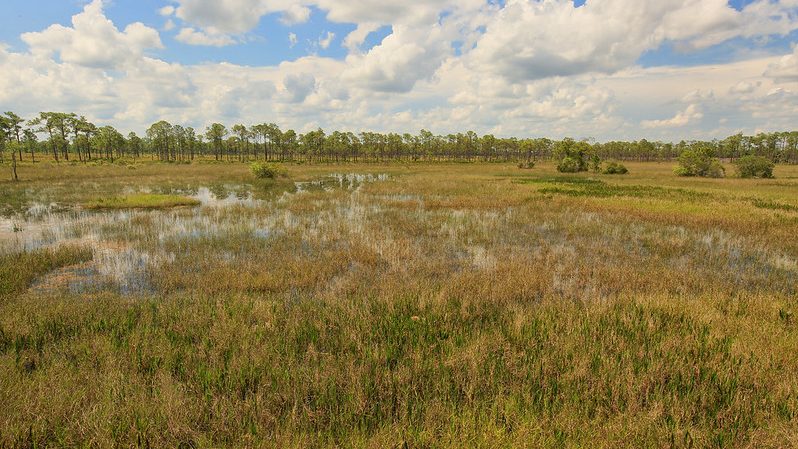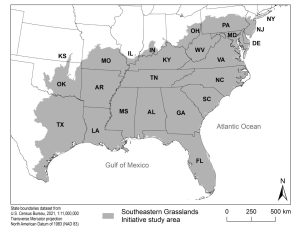Using an Ecosystem-based Approach to Solve Multispecies Conservation Challenges

An article by a SE CASC research team led by Jennifer Cartwright (USGS Biologist) and Dwayne Estes (Southeastern Grasslands Initiative) and including SE CASC Deputy Director Ryan Boyles, Improving Species Status Assessments under the U.S. Endangered Species Act and Implications for Multispecies Conservation Challenges Worldwide, was published online in the journal Conservation Biology on May 31, 2021 (the final edited and typeset version of record will appear in the future.) The article summarizes work supported by SE CASC project, Clarifying Science Needs for Southeastern Grasslands, synthesizing and applying results from facilitated discussions at a stakeholder workshop and literature review into targeted recommendations for the Species Status Assessment process. Following is the article abstract.

Despite its successes, the U.S. Endangered Species Act (ESA) has proven challenging to implement due to funding limitations, workload backlog, and other problems. As threats to species survival intensify and as more and more species come under threat, the need for the ESA and similar conservation laws and policies in other countries to function efficiently has grown. Attempts by the U.S. Fish and Wildlife Service (USFWS) to streamline ESA decisions include multispecies recovery plans and habitat conservation plans (HCPs). We address species status assessment (SSA), a USFWS process to inform ESA decisions from listing to recovery, within the context of multispecies and ecosystem planning. Although existing SSAs have a single-species focus, ecosystem-based research can efficiently inform multiple SSAs within a region and provide a foundation for transition to multispecies SSAs in the future. We consider at-risk grassland species and ecosystems within the southeastern U.S., where a disproportionate number of rare and endemic species are grassland-associated. To initiate our ecosystem-based approach we used a combined literature-based and structured World Café workshop format to identify science needs for SSAs. Discussions concentrated on five categories of threats to grassland species and ecosystems, consistent with recommendations to make shared threats a focus of planning under the ESA: (1) habitat loss, fragmentation, and disruption of functional connectivity; (2) climate change; (3) altered disturbance regimes; (4) invasive species; and (5) localized impacts. For each threat, workshop participants identified science and information needs, including database availability, research priorities, and modeling and mapping needs. Grouping species by habitat and shared threats can make the SSA process and other planning processes for conservation of at-risk species worldwide more efficient and useful. We found a combination of literature review and structured discussion effective for identifying the scientific information and analysis needed to support the development of multiple SSAs.
Noss, R.F., Cartwright, J.M., Estes, D., Witsell, T., Elliott, G., Adams, D., Albrecht, M., Boyles, R., Comer, P., Doffitt, C., Hill, J., Hunter, W.C., Knapp, W.M., Marshall, M.E., Singhurst, J., Tracey, C., Walck, J. and Weakley, A. (2021), Improving species status assessments under the U.S. endangered species act and implications for multispecies conservation challenges worldwide. Conservation Biology. Accepted Author Manuscript. https://doi.org/10.1111/cobi.13777
- Categories:
